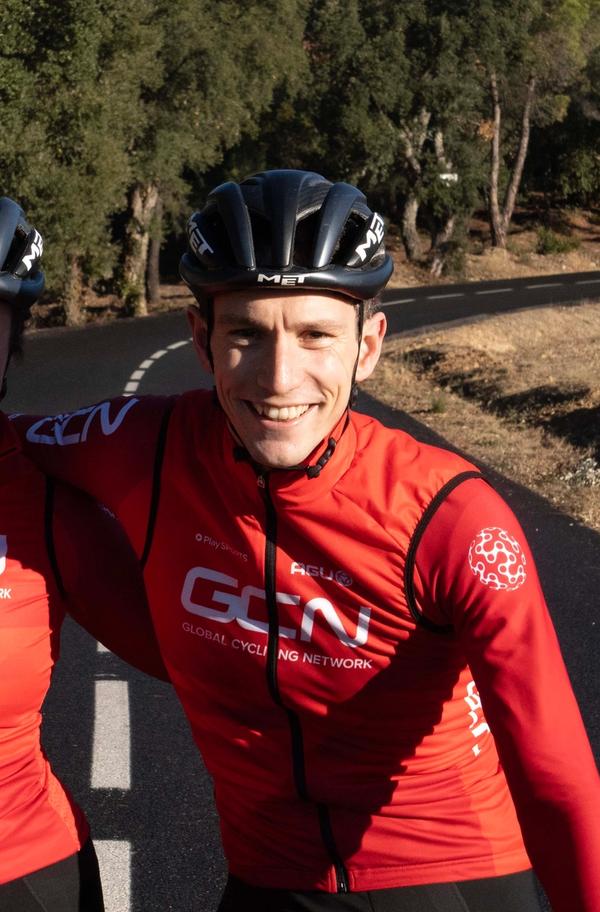How to reduce back pain when cycling
Don’t suffer with back pain while riding - these simple changes to your set up can help eliminate the root cause
Alex Hunt
Junior Tech Writer
Cyclists both new and old are likely to have suffered from back pain whilst cycling at some point. It is one of the most common forms of discomfort with plenty of different factors culminating in this common affliction.
To find out how to relieve back pain whilst riding Simon Richardson teamed up with former Team Sky and British Cycling Physio, Phil Burt. Burt is now using his years of experience to into the science of bike fitting and ergonomics.
First of all, it is worth prefacing the following points with the fact that some levels of back discomfort are expected in some cycling scenarios. If you are riding at full effort in an aero position for a long period you will likely feel some discomfort. Although these tips aim to alleviate back pain they cannot get rid of pain associated with riding on your body’s limits.
Where does back pain originate from?
In Burt's experience dealing with athletes suffering from back pain, the most common area that the pain propagates from is the muscles around the lumbar region of the spine. The cause of the pain is mostly due to the strain put on these muscles from the position we adopt when riding.
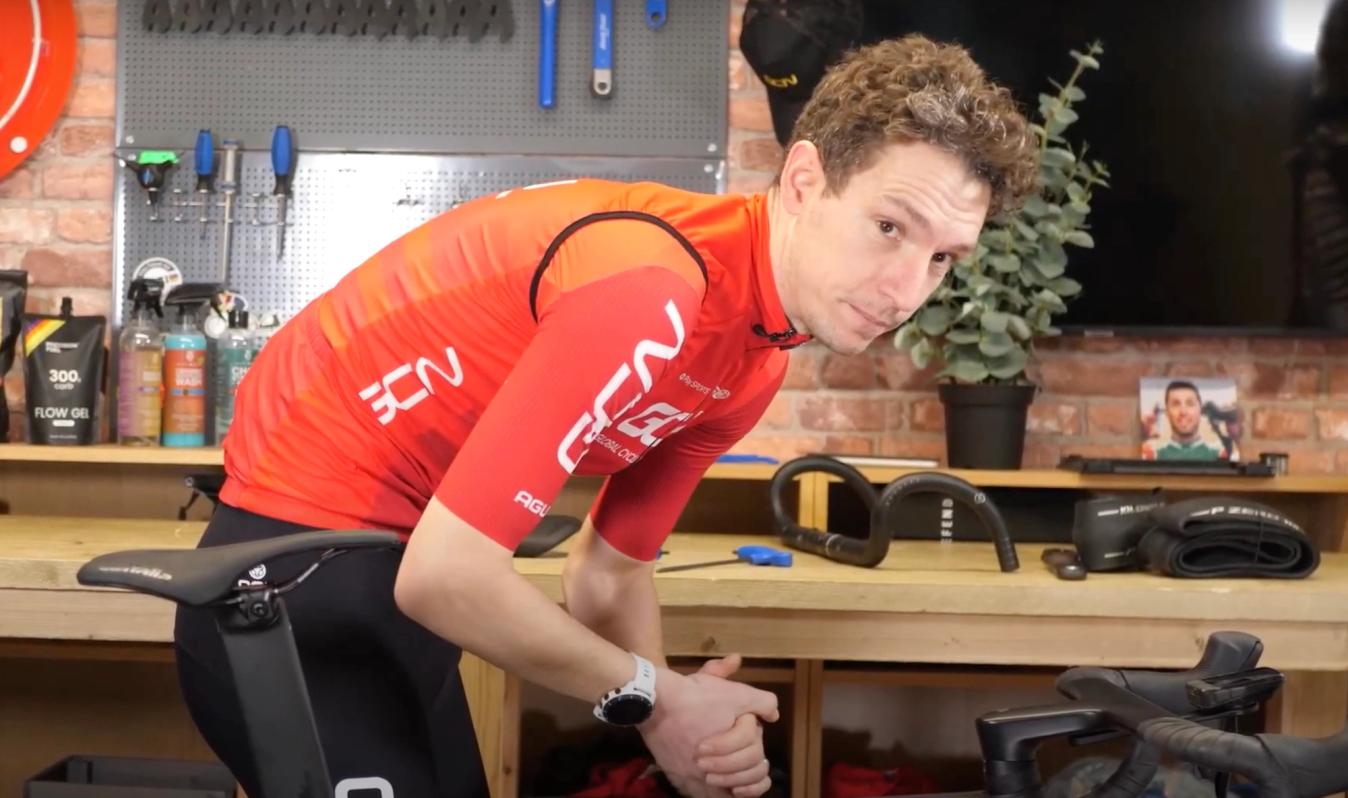
© GCN
Riding in an aggressive riding position will cause excess strain on your lower back muscles
Something Burt is quick to stress is that you should first work out whether you have existing back pain that you are taking onto the bike, or if your pain is due to cycling. This is crucial because if you have a pre-existing back problem then it may be that there aren't any issues with your riding position. Making changes to alleviate the pain will only benefit riders whose pain is caused by incorrect riding positions.
Another key indicator of there being an issue with bike fit is if you suffer from back pain within the first two hours of a ride. Burt believes that riders should be able to cycle for this length of time without suffering any back discomfort. If this is not the case then something needs to be changed.
Saddle Position
When looking to solve the cause of back pain, first look at the position of your saddle. If you’re not sure how to find the correct position it’s worth considering seeking a professional bike fit.
Finding the right saddle position for you is incredibly important as it acts as the base for all other measurements and bike fit metrics. This is to ensure that no matter what else is adjusted or changed the optimal pedalling position is retained.
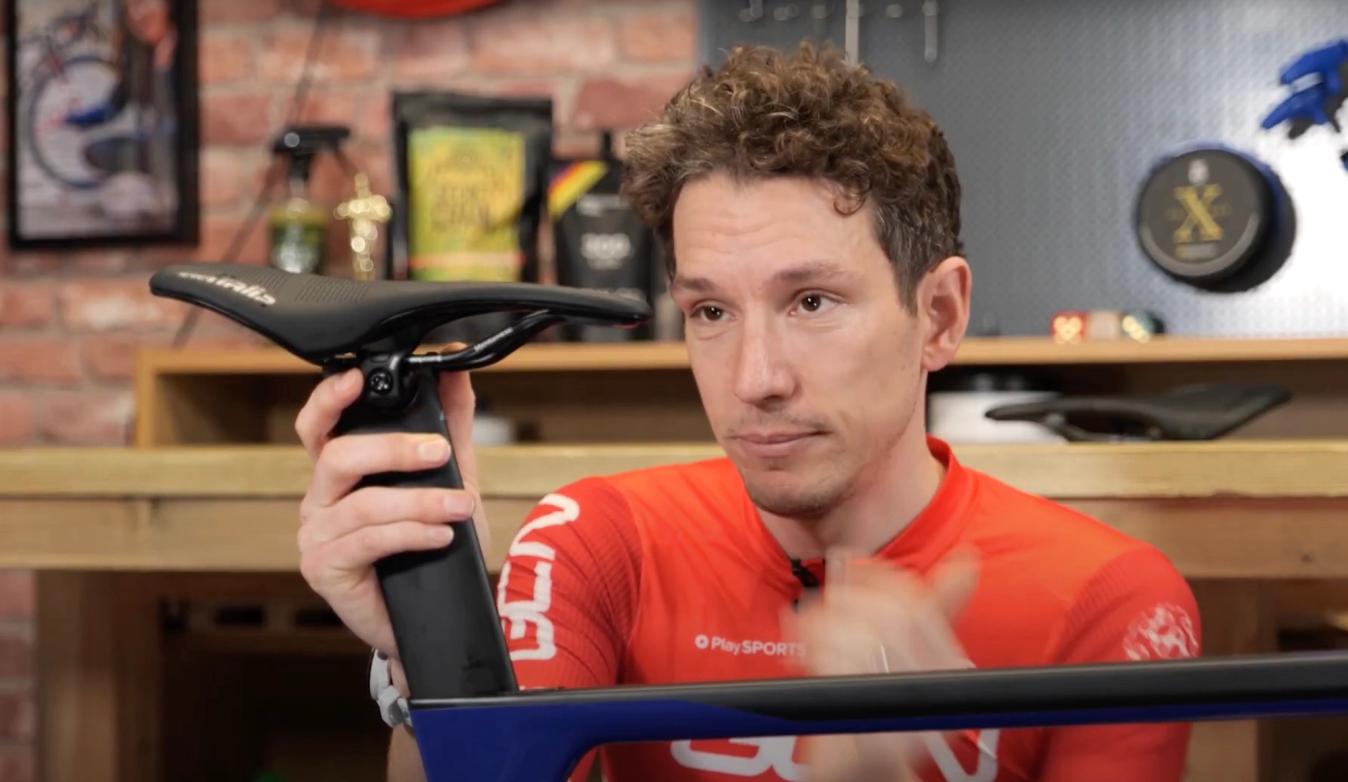
© GCN
Making sure your saddle is level or pointed slightly down will allow you pelvis to take some of the strain away from your lower back
Both the height and the setback of the saddle can cause back pain. Having the saddle too high means you’ll need to stretch further over in the riding position, which puts stress on the lumbar muscles. The same issue arises if your saddle is too far back. If you have your saddle both too high and too far back you’ll likely be in a lot of discomfort when riding.
- Read more: Saddle angle - have we got it all wrong?
The final area to look at is the angle at which your saddle is set. This can directly cause back pain if your saddle is at an angle where the nose is pointing upwards. Having the saddle at this angle prevents your pelvis from rotating around when riding meaning that your lower back has to compensate by bending more.
Having a saddle angle that is horizontal or slightly nose down will give your pelvis the freedom to rotate into a more comfortable position when riding.
Stem height and length
The position of your handlebars and shifters can also be a cause of back pain, especially lower back pain which is almost always a result of overstretching or reaching too low down to grab the bars whilst in the saddle.
If your saddle height and position are both correct but the back pain continues it is time to look at the front of the bike. If you are looking to buy a new bike it is important to make sure that it will accommodate your specific riding position as some racier bikes will not have the capacity for the bars to be brought up much higher. This is also a consideration if the bike has a one-piece bar and stem as adjusting this will come at quite a cost.
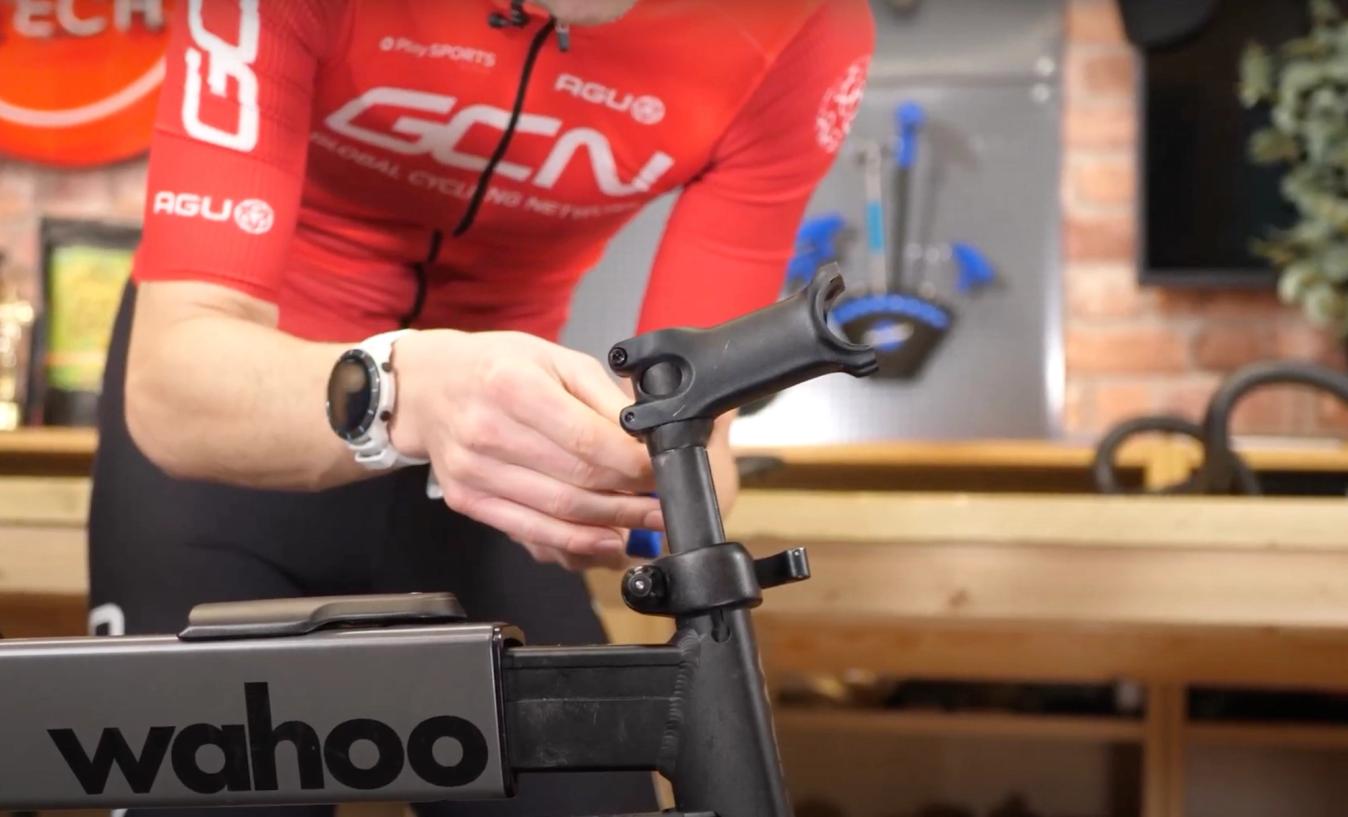
© GCN
It is possible to flip the stem to act as a riser to bring the bars higher without needing to add spacers under the stem
If you’re looking to make some adjustments to your existing bike to ease back pain you could try raising the handlebars of the bike with stem spacers. To begin with, you want to make quite a sizable change, something like 3-4cm. For some bikes raising the bars by this amount will not be possible with stem spacers alone. If you are struggling to lift the bars enough you can try flipping the stem as this will act as a riser stem which will lift the bars a little bit higher.
- Read more: What do bike geometry terms really mean?
Something else to try is bringing your bars closer to you. This will reduce how far you have to reach and in the process will relax the lumbar muscles. To do this you will need to buy a shorter stem, which typically comes in 10mm increments. So fitting one 20-30mm shorter will noticeably relax the riding position.
Handlebars
Another area to potentially adjust is the handlebars themselves. These can vary in profile from model to model and from brand to brand. Replacing your handlebars with a more compact style can reduce the reach and also the distance to the drops, in effect bringing your control points closer to you.
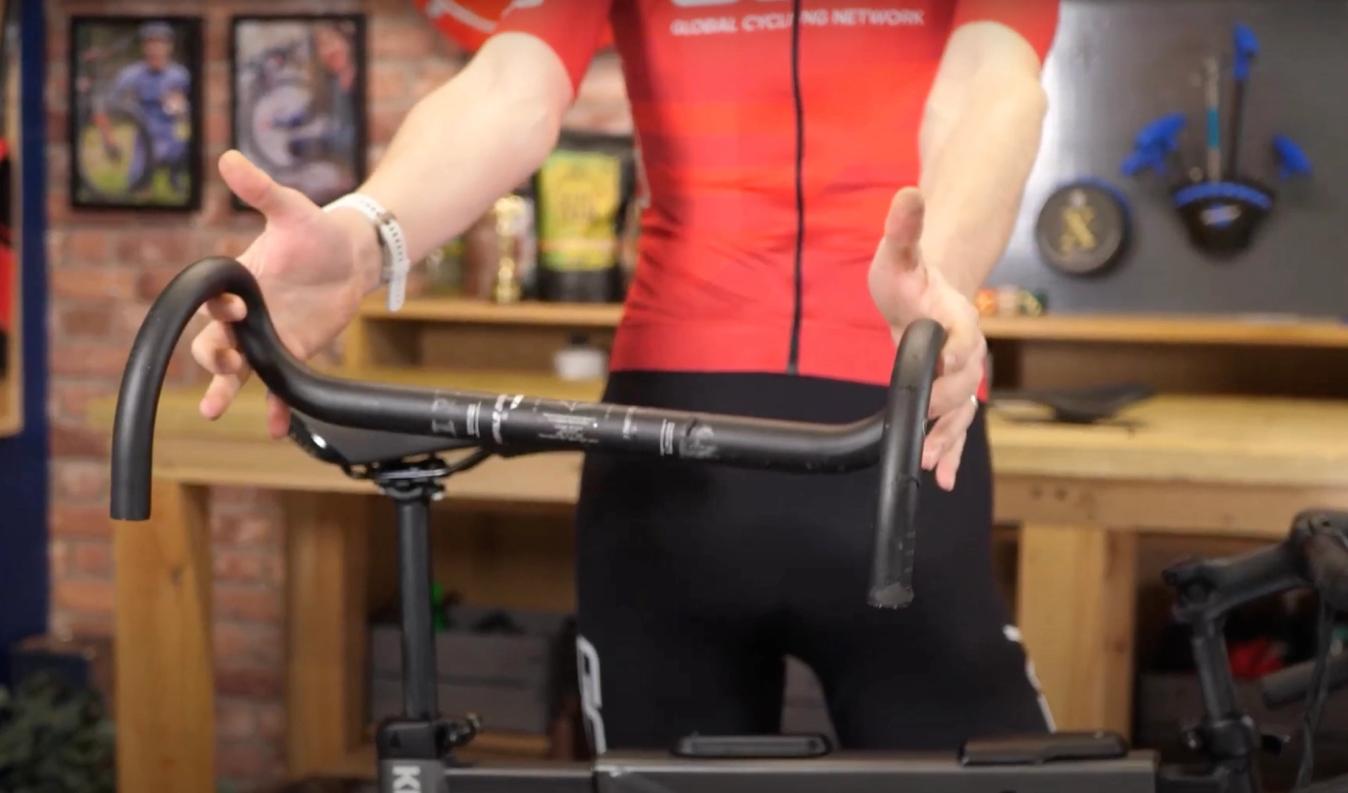
© GCN
Wide bars can lead to riders flaring their wrists to compensate, this can cause upper back pain
Burt also raised a point about using wider bars. These put your hands further away from the centre point of the bike and have the effect of lengthening the reach of the bike. He also added that using bars that are too wide can cause riders to flare their wrists out to compensate. The result of this can cause pain in the upper back.
Saddle width
A saddle that is too narrow for the rider can often result in back pain. Using a saddle that is not quite right can cause you to move around a lot trying to get comfortable and reduce pressure in certain areas. This continuous movement and stabilisation puts extra strain on the lower back muscles and can leave them overworked and sore.
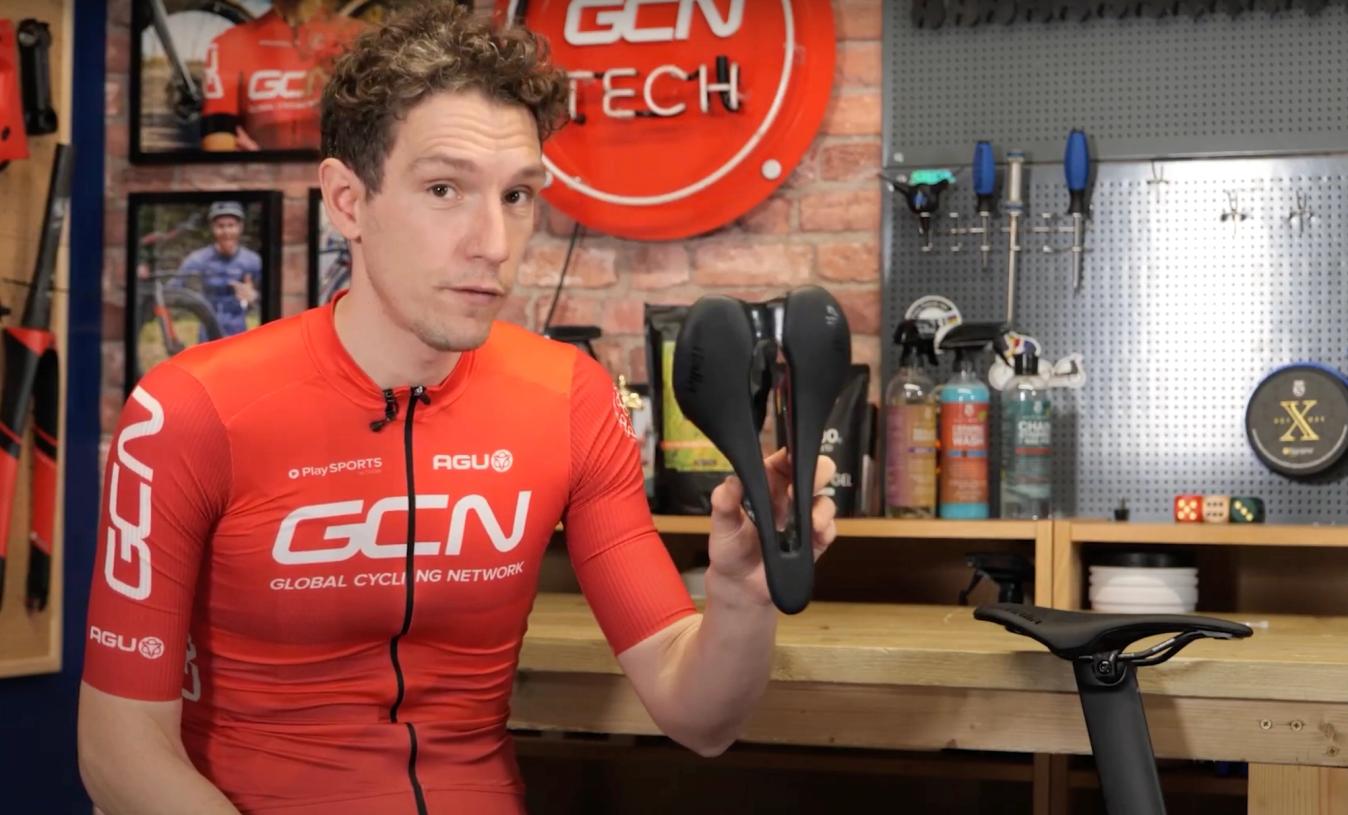
© GCN
Finding a saddle that matches your anatomy is really important to stabilising your lower back
If you tend to use the saddle the bike came fitted with, the chances are it will not be the right width for you. There is a lot of variation between riders with female riders typically needing a slightly wider saddle to compensate for their typically wider hips. To find out what width saddle you should be using you can either head to a local bike shop or bike fitting studio or try some of the online methods that can be done at home.
Switching to shorter cranks
We have heard in the past how pros like Tom Pidcock and Tadej Pogacar have been playing around with shorter crank lengths but it isn’t just the pros that can benefit. Burt explains that riding in an aggressive aerodynamic position on the bike causes your hip flexors to become shortened by the hunched position. This pulls on the lower three vertebrae of the spine where the hip flexors attach causing lower back pain.
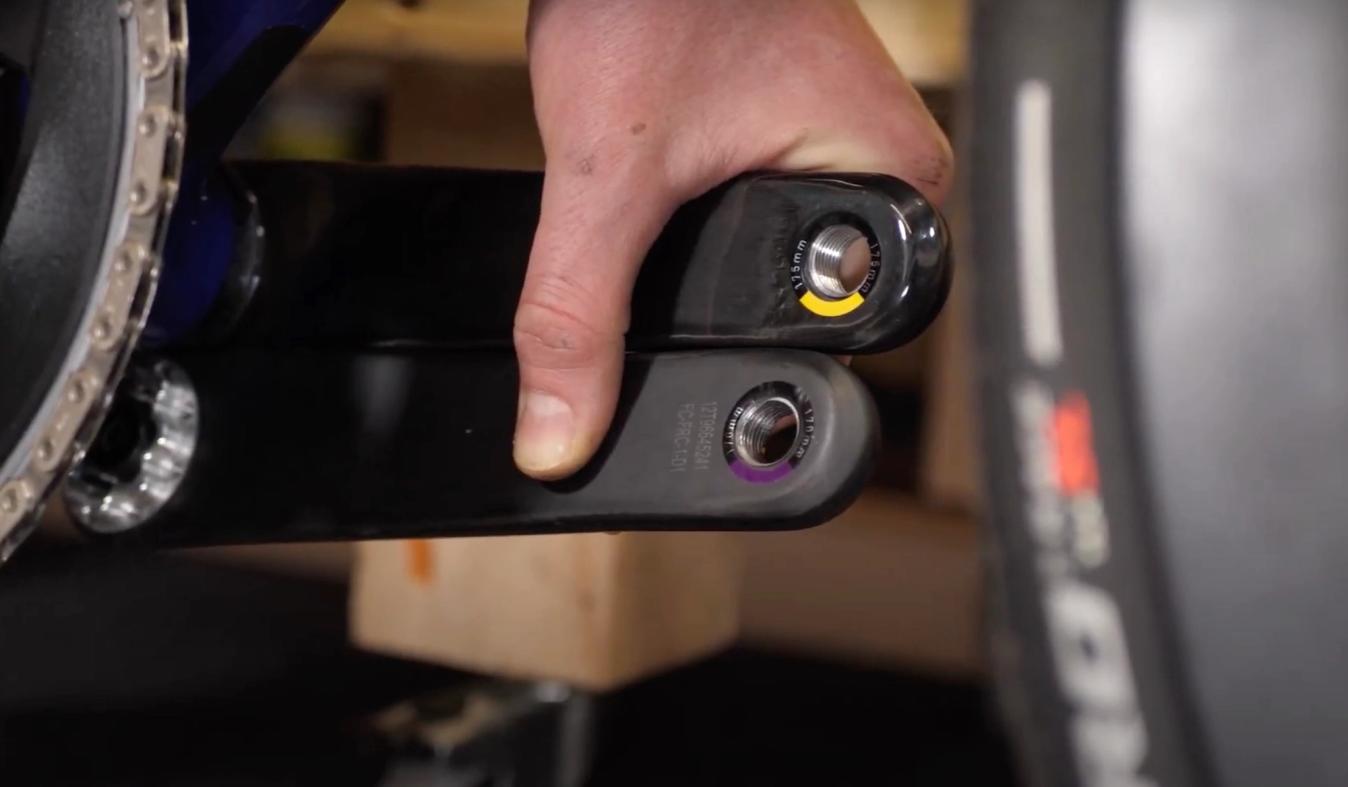
© GCN
Shorter cranks can open up the hip angle through the pedalling motion without compromising the front end position
If you want to retain the position of your bars but have issues with back pain whilst riding in an aero position, Burt recommends running shorter cranks. This will have the effect of opening up your hip angle putting less strain on the hip flexors and preventing them from excessively tightening.
Something to remember if you do decide to fit shorter cranks to your bike is to lift your saddle height by the difference between the old cranks and the new ones. This is because the shorter crank will reduce the distance from the saddle to the pedal changing your bike fit.
Tyre width
The final consideration is to look at the tyres and the pressure you are running. Fitting wider tyres and running them at lower pressures will have the effect of making your bike more comfortable by dampening out the high-frequency vibrations caused by the riding surfaces. Quite simply the more comfortable you are the more relaxed your muscles will be which will reduce discomfort whilst riding in the long run.

© GCN
Upgrading your tyres to something a bit wider will keep you comfortable and allow stabilising muscles to relax
Lastly, if you are going to take any of these measures to your bike, Burt suggests that you do not change all of the things all at once. If you do this you will be none the wiser as to what helped with the issue and could end up overcompensating and causing issues in other areas of your bike fit.
If you suffer from back pain whilst cycling and think you are going to make some of these changes let us know how it goes in the comments section below. Follow these links for more information on bike fit and dealing with pain whilst riding.
